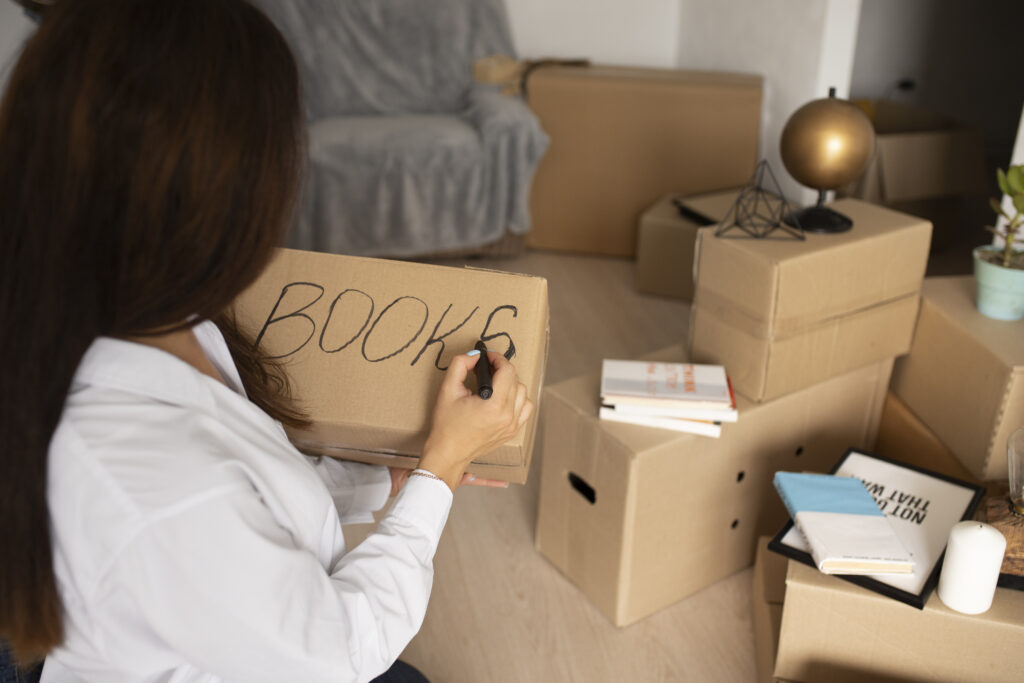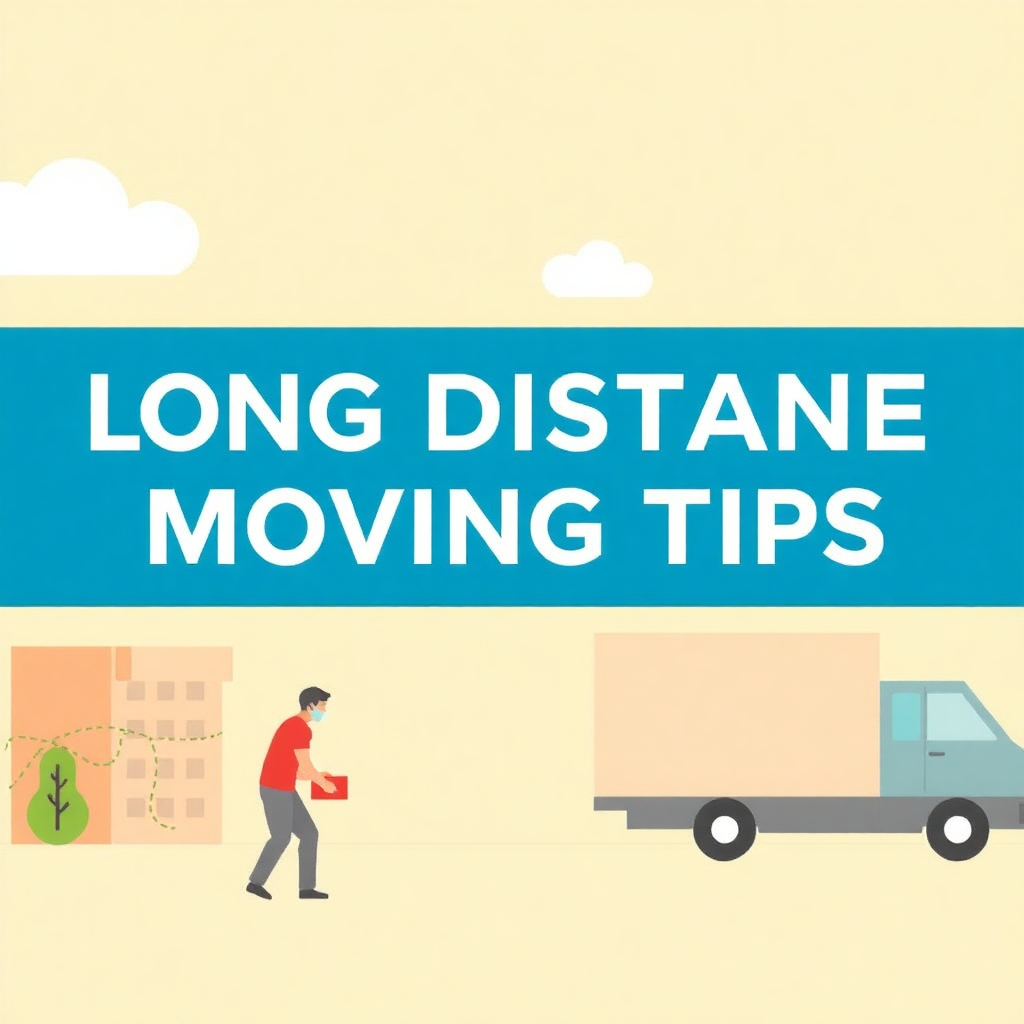Introduction
Long-distance moving is not just about packing boxes and hitting the road. It is a full-scale operation that requires careful planning, smart strategies, and a pinch of patience. Whether you’re relocating for a new job, pursuing a fresh start, or moving closer to family, it’s normal to feel overwhelmed at the thought of organizing such a big transition.
In this guide, we will break down practical tips to make your long distance moving tips smooth and stress-free. From early planning to settling into your new home, we have got you covered.
Early Planning for a Long Distance Moving Tips

Setting a Moving Timeline
Time is your best ally when preparing for a long-distance move. Start planning as early as possible—ideally two to three months in advance. Create a timeline to track tasks such as booking movers, decluttering, and packing. Set weekly goals to keep yourself on schedule and avoid last-minute chaos.
Researching Moving Companies
The moving company you choose will significantly impact your experience. Research thoroughly by reading online reviews, asking for recommendations, and checking licensing credentials. Focus on companies specializing in long-distance moves, and ensure they have adequate insurance to protect your belongings.
Creating a Moving Checklist
A detailed moving checklist is your roadmap to success. List all tasks, from forwarding your mail to notifying utility providers. Break the list into manageable sections so nothing slips through the cracks. With a checklist, you’ll have a clear view of what needs to be done and when.
Budgeting for Your Move
Estimating Moving Expenses
Long-distance moves can be costly, but knowing your expenses upfront helps you prepare. Obtain multiple quotes from moving companies and account for additional costs like packing supplies, insurance, and fuel surcharges.
Saving on Costs with Smart Strategies
Want to cut costs? Declutter your belongings to reduce the load, pack yourself to save on labor, and move during the off-season when rates are lower. Consider renting a moving container if you’re willing to handle part of the process yourself.
Tracking Your Moving Expenses
Keep a record of every penny spent on the move. Use a spreadsheet or app to track deposits, payments, and receipts. Staying organized financially can prevent unexpected expenses from derailing your budget.
Decluttering and Downsizing Before Moving

Deciding What to Keep, Donate or Discard
Moving is the perfect opportunity to purge items you no longer need. Sort your belongings into categories: keep, donate, sell, or discard. Be ruthless—if you haven’t used it in the past year, it’s time to let it go.
Benefits of Selling Unwanted Items
Selling items you don’t need can offset moving costs. Platforms like eBay, Facebook Marketplace, or local consignment stores make it easy to turn clutter into cash. Plus, fewer items to pack means less work on moving day.
Organizing a Yard Sale or Online Sale
Host a yard sale or list items online for maximum reach. Advertise your sale on local social media groups or neighborhood apps. Be organized by grouping similar items and pricing them reasonably to attract buyers.
Packing Like a Pro
Essential Packing Materials to Use
Invest in sturdy boxes, bubble wrap, packing tape, and markers. Consider specialty boxes for items like TVs or dishes. Quality materials ensure your belongings stay safe during transit.
Room-by-Room Packing Tips
Pack one room at a time to stay organized. Start with infrequently used items and leave essentials for last. Wrap fragile items individually, and use clothing or towels to cushion them inside boxes.
Labeling and Inventorying Boxes
Clearly label each box with its contents and destination room. Add a color-coding system for easier sorting. Keep an inventory list to track everything—you’ll thank yourself later when unpacking.
Choosing the Right Moving Company
Reading Reviews and Checking Credentials
Choosing a reliable moving company is crucial for a smooth transition. Start by reading online reviews on platforms like Yelp or Google. Verify credentials through organizations such as the American Moving & Storage Association or the Better Business Bureau. Ensure the company is licensed and has a USDOT number if they’re operating interstate.
Understanding Contracts and Insurance
Before signing a contract, read the terms carefully. Understand what services are included and ask questions about additional fees. Make sure the company offers adequate insurance for your belongings and clarify coverage for items lost or damaged during the move.
Comparing Quotes Effectively
Get at least three quotes from different companies. Avoid choosing the cheapest option outright; instead, weigh the services offered against the cost. Look for transparency in pricing to avoid surprise charges later.
Preparing Your Essentials for Moving Day
Packing a Moving Day Survival Kit
A survival kit is a must for moving days. Include toiletries, snacks, bottled water, phone chargers, and basic tools like scissors or a screwdriver. Keep medications and a first-aid kit handy to avoid rummaging through boxes in an emergency.
Keeping Important Documents Handy
Store essential documents like passports, birth certificates, and medical records in a secure, easily accessible folder. Consider carrying these items yourself rather than packing them with the movers to ensure their safety.
Preparing Personal Items for the Trip
For long-distance moves, pack a small bag for each family member with clothes, entertainment, and travel essentials. If you’re flying, double-check baggage requirements to avoid issues at the airport.
Managing Logistics on Moving Day
Coordinating with the Movers
Stay in communication with the moving team. Provide clear instructions about access points and any specific handling instructions for fragile or valuable items. Be present during loading to oversee the process and answer questions.
Double-Checking Inventory Lists
Before the truck departs, cross-check the inventory list with the movers to ensure everything is accounted for. Take photos of valuable or fragile items as a precaution in case of damage.
Ensuring Your Old Home is Ready for Handover
Once your belongings are packed, do a final walkthrough of your old home. Ensure windows are locked, utilities are turned off, and trash is disposed of properly. Leave the property clean and ready for the next occupants.
Transitioning to Your New Home

Unpacking Strategies to Avoid Overwhelm
Unpacking can feel daunting, but breaking it down makes it manageable. Start with essential rooms like the kitchen and bedrooms. Set up furniture and large items first, then work on organizing smaller belongings.
Setting Up Utilities and Services
Call utility providers in advance to activate services like electricity, gas, water, and internet. Check the connections as soon as you arrive to address any issues immediately.
Getting to Know Your New Neighborhood
Familiarize yourself with your new surroundings. Locate nearby grocery stores, pharmacies, schools, and parks. Introduce yourself to neighbors to start building a sense of community.
Tips for Moving with Kids and Pets
Preparing Kids for the Transition
Moving can be tough on kids. Talk to them about the change, involve them in packing their belongings, and maintain routines as much as possible. Highlight the exciting aspects of the new home to ease their anxiety.
Managing Pet Transport
Plan your pet’s journey carefully. For long drives, keep them secure in a crate with access to water. If flying, check airline policies on pet travel. Ensure they have updated ID tags and records for vaccinations.
Settling Kids and Pets in the New Home
Help kids and pets acclimate by setting up their spaces first. Introduce familiar items, like toys or bedding, to make the new environment feel more comfortable. Spend quality time together to reassure them.
Overcoming Long-Distance Moving Stress
Staying Organized and On Schedule
Disorganization is a major stressor during moves. Stick to your timeline and use tools like apps or planners to track progress. Delegate tasks to family members or friends to lighten the load.
Taking Care of Yourself During the Process
Don’t neglect self-care while moving. Stay hydrated, take breaks, and get enough sleep. Treat yourself to small rewards after completing major tasks—it’s important to keep your morale high.
Seeking Professional Help When Needed
If you’re feeling overwhelmed, consider hiring a professional organizer or consultant. They can provide valuable expertise and help streamline the process, saving you time and energy.
Sustainable Moving Practices
Eco-Friendly Packing Materials
Traditional packing materials like plastic bubble wrap and Styrofoam aren’t environmentally friendly. Instead, opt for sustainable options such as recycled cardboard boxes, biodegradable packing peanuts, and reusable containers. You can also use items like towels, blankets, and clothing to cushion fragile items, reducing waste and saving money.
Donating Instead of Discarding
Don’t toss items you no longer need—donate them instead. Local charities, shelters, and nonprofit organizations often accept furniture, clothing, and household goods. This approach not only minimizes landfill waste but also benefits your community.
Reducing Your Carbon Footprint During Moving
Long distance moving tips often involve significant transportation emissions. Minimize your environmental impact by hiring a moving company that uses fuel-efficient vehicles or offsetting your carbon footprint through donation programs. Consider consolidating trips to save fuel and energy.
Common Mistakes to Avoid
Skipping Research on Moving Companies
One of the biggest mistakes is hiring the first moving company you find. Failure to research can lead to hidden fees, delays, or damaged belongings. Always vet companies thoroughly to avoid unnecessary headaches.
Leaving Packing for the Last Minute
Procrastination is a recipe for disaster. Rushed packing often results in poorly packed boxes, forgotten items, and excessive stress. Start packing weeks in advance, focusing on non-essential items first.
Forgetting to Update Your Address and Utilities
Many people forget to update their addresses with banks, insurance providers, and subscription services. Notify these entities well ahead of your move. Similarly, schedule utility transfers to avoid disruptions at your new home.
Final Checklist Before You Go

Confirming Moving Details with Movers
Double-check all details with your moving company before the big day. Confirm the date, time, and address, and ensure the contract reflects all agreed-upon services. This step can prevent last-minute surprises or miscommunications.
Performing a Last Walkthrough
Before you lock up your old home for good, do a thorough walkthrough. Check every room, closet, and cabinet to ensure nothing is left behind. Make sure all lights are off, windows are secure, and keys are returned if needed.
Ensuring Safety and Security
Secure important documents, valuables, and medications by carrying them with you. Avoid loading these items into the moving truck, as they’re harder to retrieve and more vulnerable to loss. For extra peace of mind, keep a small toolkit handy in case of emergencies.
Conclusion
Moving long distances can feel like a monumental task, but with careful planning and organization, it’s entirely manageable. By starting early, setting a budget, decluttering, and choosing the right long distance moving company, you’re already halfway to a successful relocation. Remember to prioritize your well-being, take breaks, and approach the move one step at a time.
A new home brings fresh opportunities—embrace the adventure and look forward to the possibilities ahead. With the right strategies, your long-distance move will be a smooth and exciting transition.
FAQs
- How far in advance should I start planning for a long-distance move?
Ideally, start planning at least 8–12 weeks before your move. This gives you ample time to book movers, declutter, and organize your belongings. - What are the best ways to save money on a long-distance move?
Declutter to reduce the load, pack your own items, and schedule your move during the off-season. Compare quotes from multiple moving companies to find the best deal. - How do I ensure my belongings are safe during the move?
Use high-quality packing materials, label fragile items, and choose a reputable moving company with good reviews and insurance options. - What should I pack in my essentials bag for moving day?
Pack toiletries, medications, a change of clothes, chargers, important documents, snacks, and basic tools for easy access during the move. - How can I make my move more eco-friendly?
Use sustainable packing materials, donate unwanted items, and hire a moving company with environmentally conscious practices to reduce your carbon footprint.

